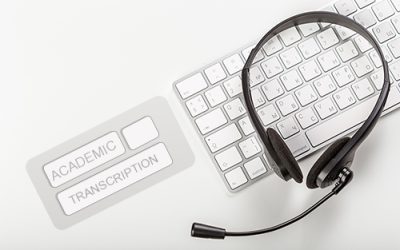Note taking is critical, mainly in the academic community. Taking effective notes helps students to streamline their study process and concentrate on their syllabus better. Notes also act as a resource for exam preparation. Professional academic transcription services can help this community to convert their audio or video recordings of lectures, dissertations and academic interviews into text format.
The most popular methods of note-taking are linear notes, which includes lists or short sentences with headings, subheadings and underlined or highlighted key points, all in a structured, logical way and diagrams such as mind maps or spider diagrams which provide different ideas linked with each other.
Good note-taking involves analyzing and organizing the information to build a better understanding of the subject. Notes can help to remember the key points of a book, speech, lecture or meeting, record information for future reference, and revise for tests or exams. However, manual note-making can distract you from listening to lectures and to find out the key points you will have to spend twice the amount of time reading them again and again.
How recording and transcription makes note taking effective
Prepare lectures beforehand
If you are a college student, studying the materials that are going to be covered in the lecture ahead of time is a great way to prepare. Modern technology makes recording audio and even video an incredibly simple way to get information, letting you record right on your phone.
Listen to the speaker
During a lecture, consider recording instead of writing down. Dictations by professors can be recorded so that you will be able to concentrate and listen to what they say rather than strive to complete the notes. By recording the session, you can also focus on the speaker’s thoughts and ideas put forth in the meeting, which you are likely to miss when manually taking down notes.
Stay active
Recording the discussion helps you to be an active participant in a lecture or meeting. If you are busy writing down what is being said by other participants, you cannot be an active participant and the session will not be interactive as well. Offer ideas in a meeting and you can also ask questions to clarify things you are unsure about.
Review notes as soon as possible
In between breaks or after the lecture ends, you will have to run through your notes to make sure that the information covered is still fresh in mind. This review helps to find the areas of the lecture which you’re not clear about and this makes it easy to ask follow-up questions during the next class session. Recording notes and transcribing them makes the review process easier.
Also read our blog on tips for effective note taking!
All the recorded notes can be converted into accurate transcripts that make studying or sharing information much easier. In case you think that non-verbal transcripts are also crucial, capture video recordings of the lecture or meeting.
Academic transcription can also be incredibly useful for the professional research community. Instead of taking notes while a thesis preparation is in progress, a voice recorder or smartphone app can be used to record every observation. This audio can then be transcribed for later use. Reliable transcription outsourcing companies can improve content accuracy along and save valuable time for students. Correct transcripts of research notes, dissertation materials, conferences and classroom recording enable researchers, professors, and students to concentrate more on their critical activities.




